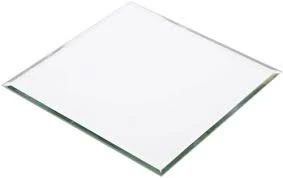

Understanding Low Emittance Glass and Its Applications
Low emittance glass, also known as low-e glass, is a type of energy-efficient glazing that has revolutionized the construction and building industries. This innovative material is designed to minimize the amount of infrared and ultraviolet light that passes through it without compromising the amount of visible light that enters a building. By doing so, low-e glass plays a pivotal role in enhancing energy efficiency, comfort, and sustainability in both residential and commercial environments.
What is Low Emittance Glass?
Low emittance glass is coated with a microscopically thin layer of metal oxide. This coating significantly reduces the emissivity of the glass, which refers to the material's ability to radiate absorbed heat. In essence, low-e glass reflects heat back into a room during the winter months and keeps it out during the summer, thus maintaining a stable indoor temperature. This technology enables buildings to utilize heating and cooling systems more effectively, resulting in lower energy consumption and reduced utility bills.
Benefits of Low Emittance Glass
1. Energy Efficiency The most notable advantage of low-e glass is its ability to improve energy efficiency. Buildings that incorporate low-e windows often require less energy for heating and cooling, contributing to significant cost savings over time. Studies have shown that low-e glass can reduce energy loss by up to 30-50%.
2. Comfort By minimizing heat fluctuations, low-e glass offers enhanced comfort for occupants. It helps in reducing cold drafts during winter and keeps spaces cooler during the hotter months. This consistent indoor environment is particularly beneficial for spaces like offices, schools, and residential areas.
3. UV Protection Low-e glass also provides some level of ultraviolet (UV) protection. The coating helps block harmful UV rays that can fade furniture, carpets, and artwork, extending the longevity of your interior spaces.

4. Noise Reduction The increased thickness and insulation properties of low-e glass can also help reduce external noise, making buildings quieter and more pleasant places to live and work.
5. Environmental Impact Utilizing low-e glass can contribute to a building’s LEED certification and reduce its overall carbon footprint. By lowering energy demand, it helps decrease greenhouse gas emissions associated with energy production.
Applications of Low Emittance Glass
Low-e glass is versatile and can be utilized in various applications, including
- Residential Projects Homeowners increasingly opt for low-e glass in windows and patio doors to enhance comfort and energy efficiency. - Commercial Buildings Many office buildings and retail spaces are built with low-e glass to create a more sustainable environment while providing a visually appealing façade.
- Skylights and Curtain Walls Low-e glass is ideal for skylights and curtain walls, allowing natural light to enter while maintaining thermal comfort.
Conclusion
In summary, low emittance glass is a groundbreaking advancement in construction technology. Its capabilities to enhance energy efficiency, provide comfort, offer UV protection, and reduce noise make it an essential choice for modern buildings. As the demand for sustainable building practices continues to rise, incorporating low-e glass will likely become a standard in both new constructions and renovations. With its numerous benefits, low-e glass not only contributes to the individual well-being of occupants but also plays a significant role in promoting a greener planet. For architects, builders, and homeowners alike, investing in low-emittance glazing is a step towards a more sustainable and comfortable future.